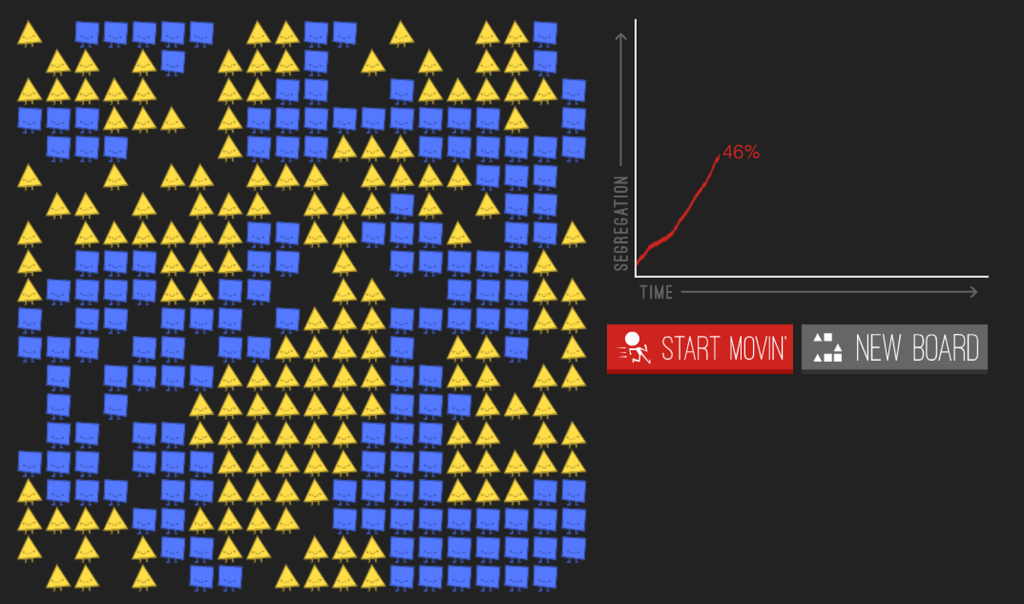Parable of the Polygons is an interactive blog post by Vi Hart and Nicky Case about bias and self-segregation that effectively shows how even a slight bias can cause strong self-segregation.
To start, polygons are unhappy if only 1/3 of the polygons around them are like them, and they’ll want to be moved to be around others of their kind. The results are striking.
One of the better intentionally rhetorical uses of simulation I’ve seen, Parable of the Polygons shows how brilliantly playable blog posts and articles can shine once we get away from a superficial idea of gimmicky “interactive storytelling” (by which the New York Times means something very different than we do). The interactivity here is not gimmicky; it’s an essential part of the experience. The meaning is derived from the interaction itself and supplemented by the text, rather than the playable portions serving as a dazzling means of getting to the real content, as we see in several of the New York Times examples of “interactive posts.”
Though I was at first tempted to call it a “playable infographic,” without stats and figures, that’s really not a fair representation, and sterilizes the character and charm of the piece. Interestingly, this playable post does seem to keep with the spirit of newsgames, playable demonstrations with deeply embedded procedural rhetoric applicable to current events. However, in contrast to recognized newsgames like Darfur is Dying and September 12th, Parable of the Polygons does not directly reference a single historical event to call focus to it, but rather reflects broader trends applicable across many types of political divides.
Parable of the Polygons is adorable and informative. Its rhetoric is cogent and timely. I highly recommend it.


